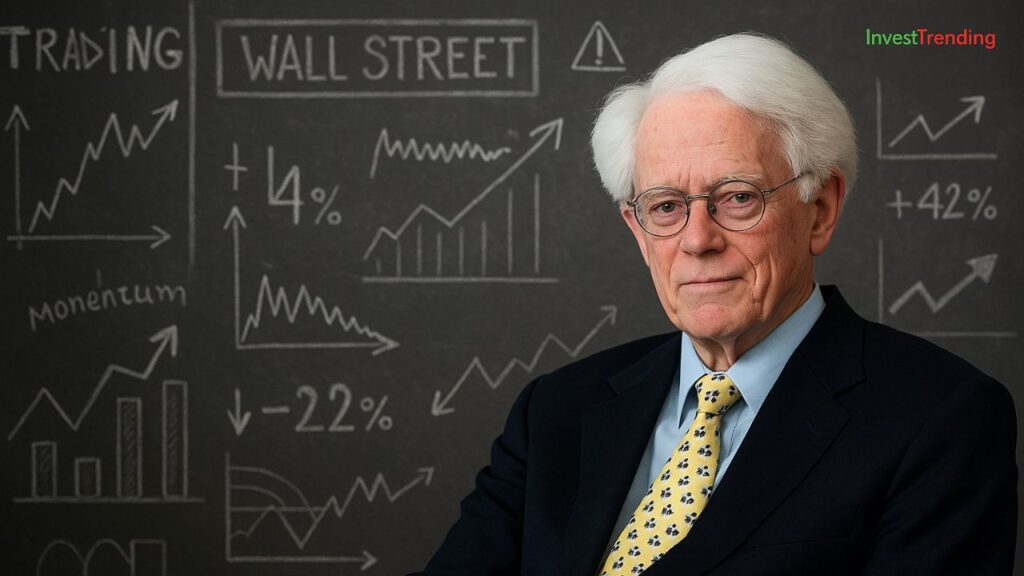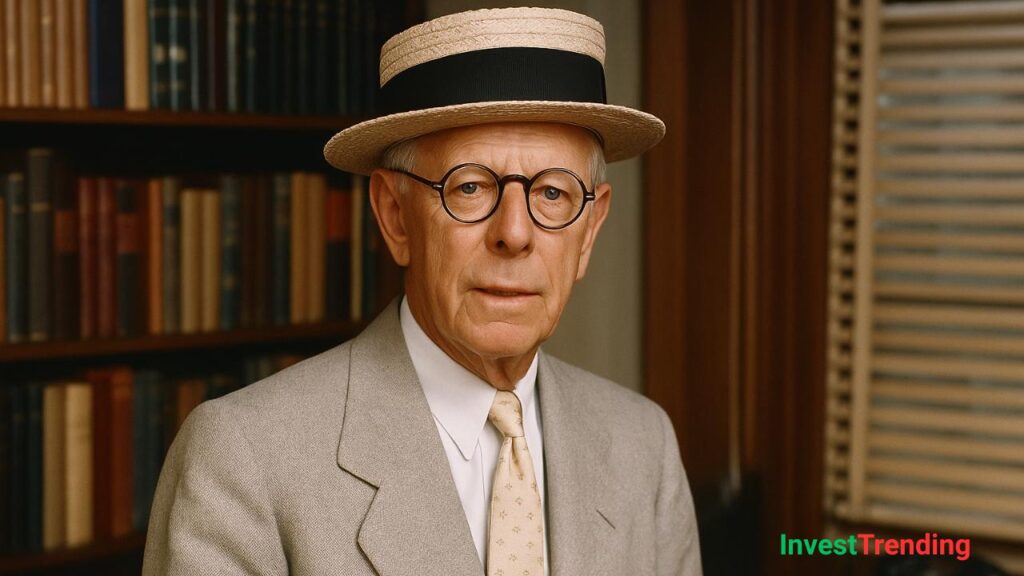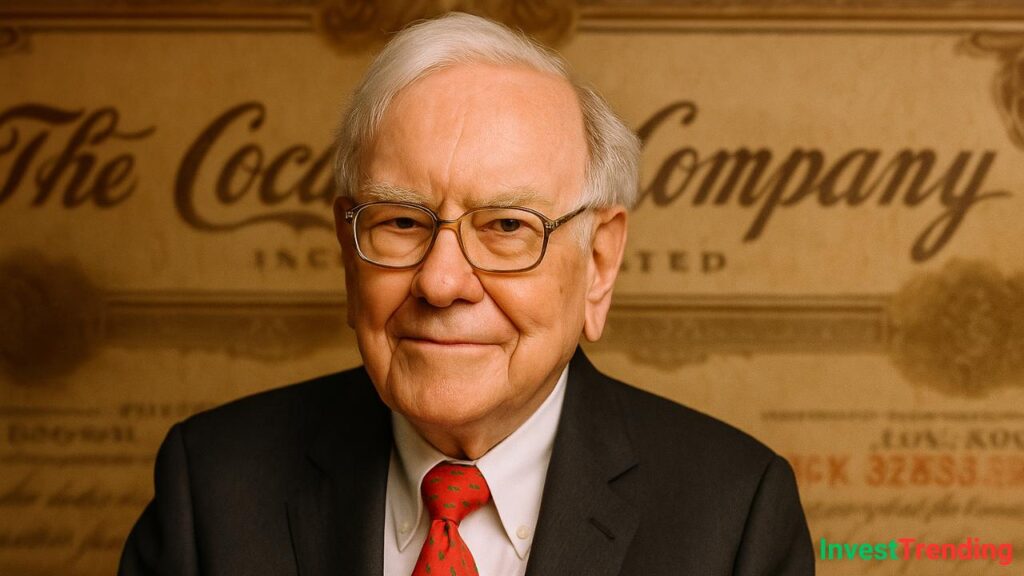
“Know what you own, and know why you own it.”
– Peter Lynch
Early Life and Education
Peter Lynch was born on January 19, 1944, in Newton, Massachusetts. He showed an early interest in business and finance, largely influenced by his surroundings and life experiences. His father, a mathematics professor, passed away when Peter was only ten years old, which forced his mother to manage the household finances. This exposure to financial struggles instilled in Lynch a strong sense of financial responsibility from an early age.
Lynch attended Boston College, where he studied finance. During his time there, he worked as a caddy at a golf club that was frequented by businessmen and investors. This job played a significant role in shaping his future, as he was able to network with influential figures in the finance industry, including Dreyfus Fund President George Sullivan. Lynch’s exposure to stock market discussions among these businessmen ignited his passion for investing.
After graduating from Boston College in 1965, Lynch pursued an MBA at the University of Pennsylvania’s Wharton School of Business. His formal education in finance laid a strong foundation for his future career.
“Invest in what you know.”
– Peter Lynch
Entry into the Investing World
Lynch’s big break came in 1966 when he joined Fidelity Investments as an intern. His keen analytical skills and passion for investing quickly became evident. After serving in the U.S. Army for two years, he returned to Fidelity full-time in 1969 as a research analyst. He initially covered various industries, including textiles, metals, and mining, gaining invaluable experience in evaluating businesses and industries.
“The real key to making money in stocks is not to get scared out of them.”
– Peter Lynch
The Magellan Fund and Rise to Fame
In 1977, at the age of 33, Lynch was appointed as the manager of the Fidelity Magellan Fund, which at the time had $18 million in assets under management (AUM). Under his leadership, the fund saw extraordinary growth, increasing its AUM to over $14 billion by the time he retired in 1990.
During his tenure, Lynch achieved an average annual return of 29.2%, making the Magellan Fund one of the most successful mutual funds in history. His ability to consistently outperform the market earned him legendary status among investors.
“Everyone has the brainpower to make money in stocks. Not everyone has the stomach.”
– Peter Lynch
Investment Strategies and Philosophy
Lynch’s investment philosophy was built on several core principles that differentiated him from other investors:
1. Invest in What You Know
Lynch believed that everyday investors had an advantage over professional analysts if they simply observed the world around them. He encouraged investors to invest in companies they understood and encountered in their daily lives.
2. Bottom-Up Stock Picking
Unlike many investors who focused on macroeconomic trends, Lynch emphasized a bottom-up approach. He meticulously analyzed individual companies, assessing their financial health, growth potential, and competitive advantages before making investment decisions.
3. Growth at a Reasonable Price (GARP)
Lynch pioneered the GARP strategy, which combines elements of both value and growth investing. He sought companies with strong earnings growth potential but at reasonable valuation multiples.
4. The Power of Earnings Growth
Lynch focused on companies with strong earnings growth. He popularized the Price-to-Earnings Growth (PEG) ratio, which helps investors assess whether a stock is overvalued or undervalued relative to its growth rate.
5. The Importance of Research and Due Diligence
Lynch was known for his thorough research. He read annual reports, attended industry conferences, and visited company headquarters to gain a deeper understanding of businesses.
6. Categorizing Stocks
Lynch classified stocks into six main categories:
- Slow Growers: Mature companies with stable earnings but low growth.
- Stalwarts: Large, well-established companies with moderate growth.
- Fast Growers: Small to mid-sized companies with high growth potential.
- Cyclicals: Companies whose performance is tied to economic cycles.
- Turnarounds: Struggling companies with potential for recovery.
- Asset Plays: Companies with undervalued assets.
“Go for a business that any idiot can run – because sooner or later, any idiot probably is going to run it.”
– Peter Lynch
How Peter Lynch Made Money
Lynch’s strategy of selecting high-growth stocks and holding them for the long term was key to his success. Some of his most famous investments included:
- Ford Motor Company – Recognizing a turnaround opportunity.
- Dunkin’ Donuts – Understanding consumer demand and brand strength.
- Fannie Mae – Identifying an undervalued financial institution.
- Walmart – Betting on retail expansion and consumer trends.
By diversifying his portfolio across different industries and maintaining a long-term perspective, Lynch maximized returns while minimizing risk.
“You get recessions, you have stock market declines. If you don’t understand that’s going to happen, then you’re not ready, you won’t do well in the markets.”
– Peter Lynch
Challenges and Criticism
Despite his success, Lynch faced challenges, including periods of market downturns and criticisms about his high turnover rate. Some analysts argued that his approach was difficult for retail investors to replicate due to the level of research required.
“Behind every stock is a company. Find out what it’s doing.”
– Peter Lynch
Retirement and Legacy
Lynch retired from Fidelity in 1990 to spend more time with his family. However, he continued to be active in the investment community, writing books, conducting interviews, and mentoring new investors. His books, including One Up on Wall Street, Beating the Street, and Learn to Earn, have educated millions of investors worldwide.
Where is Peter Lynch Now?
Lynch remains a respected figure in the investment world. He is actively involved in philanthropy and continues to provide insights into the market. His influence on modern investing remains strong, with many fund managers and individual investors still following his principles.
Final Thoughts
Peter Lynch’s investing legacy is built on simplicity, research, and a keen eye for opportunity. His success demonstrates that individual investors can achieve exceptional returns by following disciplined and well-researched investment strategies. His work continues to inspire new generations of investors, making him one of the greatest investors of all time.
“Far more money has been lost by investors trying to anticipate corrections than has been lost in the corrections themselves.”
– Peter Lynch



